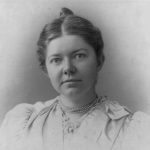February 28 and March 1, 2025
Meymandi Concert Hall
Raleigh, North Carolina – USA
North Carolina Symphony; Carlos Miguel Prieto, conductor.
Richard WAGNER, compiled by Lorin Maazel: The Ring without Words
Christopher Hill | 2 MAR 2025
Wagner’s opera cycle The Ring of the Nibelungen was begun during an age of revolution, at more or less the same time Wagner was participating in the German States uprising (1848) and the Dresden revolution (1849). The Ring began with words — and very influential words at that: not only did the tetralogy affect many German dramatists and poets, but much of Tolkien, for instance, can be read as a brilliant crib on Wagner. In the early 1850s, Wagner began in earnest to set his words to music.
The first opera in the tetralogy, Das Rheingold, was completed in May 1854; the second, Die Walküre, followed in 1856. Neither work was produced at the time, for the composer wanted his tetralogy to be heard whole. Wagner began the tetralogy’s third opera in 1857, but life had other plans. Those plans included Tristan und Isolde and Die Meistersinger von Nürnberg, and when Wagner took up again and finished the third opera it was twelve years on; the composer had a new life (in Bavaria), a new wife (a daughter of Liszt), a new son (named Siegfried, after the third opera), and a markedly different musical style. This style was further elaborated and explored in the final opera of the tetralogy, completed in 1874.
Wagner’s music was even more influential than his words, and one of its influences was to encourage German-speaking composers to write longer and longer works for bigger and bigger ensembles, symphonies by Bruckner and Mahler, for instance, or tone poems by Strauss, or the piano concerto by Busoni. The whole of The Ring requires about 16 or more hours of performance spread over four days. The premier was a big deal. Such was its aesthetic power that the composer Gabriel Fauré swooned during the first performance and had to be carried out of the auditorium.
Fast forward 151 years. The Ring without Words, in performance on February 28, clocked in at 74 minutes long, and during its performance, something similar occurred: a millennial in front of me needed a bathroom break (“’scuse me, ’scuse me, ’scuse me, ’scuse me…”), a token, perhaps, of how performance etiquette changes when beer is served in the lobby.
What is The Ring without Words? Therein lies a story.
At the very beginning of the stereo vinyl era, Decca Records produced an LP set of The Ring that was so well recorded and mastered that the set helped make stereo systems requisite for true music lovers (not to mention most everyone else).
That history may have played a role when, at the very beginning of the CD era, the fledgling CD company Telarc turned again to Wagner’s Ring, this time commissioning conductor and composer Lorin Maazel to put together a selection of orchestral music from The Ring that would show off both the longer playing time and sonic benefits of the CD medium.
In response, Maazel compiled a 75-minute tone poem consisting entirely of music written and orchestrated by Wagner himself, artfully arranged in the order it is heard in the tetralogy, with transitions and contrasts appropriate enough to sound as if Wagner himself might have done the arranging. Also artful is its particular emphasis on showing Wagner’s changing treatment of his leading motives over the course of twenty years.
When Telarc released the CD, Maazel’s work impressed many. Eventually, The Ring without Words started getting concert performances, and not only ones led by Maazel. Last month, the Atlanta Symphony’s Natalie Stutzmann, for instance, led the New York Philharmonic in a performance to glowing reviews.

Carlos Miguel Prieto (credit: Benjamin Ealovega)
Speaking of conducting music directors, Prieto’s chiseled features, graying temples, and tall, elegant figure remind this reviewer a bit of the famous Furtwaengler. Indeed, the chief visual impression Prieto gives is, as with Furtwaengler, that of poise. However, it is a poise whose balance is not lost even when the conductor becomes highly animated. And highly animated he was much of the time on February 28.
In Wagner, Prieto conducted with enormous physical energy and emotional passion. In the first half of the piece, his fluent baton pierced the air savagely at appropriate places; in the second, he relinquished the baton, allowing his hands to tease out even more expressive playing from his ensemble. In both halves, the conductor occasionally leapt into the air to make his expressive point — quite unself-consciously, this reviewer thought. (I was reminded of how Beethoven is said to have leapt into the air when conducting a rehearsal of his Ninth Symphony.)
As for the players themselves, the North Carolina Symphony performed The Ring without Words with great fluency, with well-balanced winds, with no bobbles in the difficult brass parts, with great color from the extensive percussion battery (particularly in Wagner’s “Nibelungen” passages), and with sometimes an achingly tender sentiment, particularly in the last third of the work, where Wagner himself is at his best.
The North Carolina Symphony does not quite come across as an opera orchestra — that is, it does not come across as one that has played this music when singer-actors were simultaneously doing what singer-actors do, which inevitably influences the flow of the music in subtle ways, humanizing it, if you will. But then, that’s okay; why should it? This was a tone poem, played as such.
About a third of the way through, just before the “Ride of the Valkyries,” during a pause following a dramatic, affirmative chord in the brass, part of the audience started applauding. Prieto smiled ever so slightly, then went with the flow and morphed the dramatic pause into an undramatic, longer one, in effect breaking this one-movement tone poem into two movements. It was undoubtedly the right thing to do under the circumstances.
At the work’s end, the audience in the well-filled auditorium quickly rose to its feet and applauded vigorously for at least five minutes while Prieto walked to the back of the orchestra and then slowly made his way to the front, apparently thanking each player personally for their successful efforts. ■
EXTERNAL LINKS:
- North Carolina Symphony: ncsymphony.org
- Carlos Miguel Prieto: carlosmiguelprieto.com

Read more by Christopher Hill.







.png)